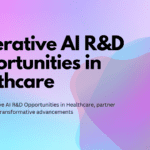In the contemporary world, where technology is advancing at an unprecedented pace, Artificial Intelligence (AI) has become a pivotal force driving innovation and efficiency across various sectors. Among the different subsets of AI, Generative AI has carved a niche for itself due to its extraordinary ability to generate original content. This ranges from text and images to music and even complete virtual worlds. However, despite its immense transformative potential, the widespread adoption of Generative AI within organizations is met with significant resistance. This article aims to explore the reasons behind this resistance and suggest strategies to overcome it, thereby facilitating a smoother transition towards embracing Generative AI.
Understanding the Resistance to Generative AI Adoption
The roots of resistance to Generative AI adoption are multifaceted and complex. They include:
- Fear of Job Displacement: A primary concern among employees is the fear of being supplanted by AI-powered systems. This fear is fueled by the misconception that Generative AI will automate tasks, leading to a wave of job losses.
- Lack of Transparency: Generative AI algorithms often function as black boxes, making it difficult for users to comprehend how decisions are made. This lack of transparency fosters distrust and uncertainty about the reliability and fairness of AI-generated content.
- Ethical Concerns: Issues related to bias in training data and the potential misuse of AI-generated content raise ethical red flags. Organizations are apprehensive about unintentionally perpetuating stereotypes or inadvertently generating harmful content.
- Unfamiliarity: Generative AI is still a relatively new technology, and many users lack a clear understanding of its capabilities and limitations. This lack of familiarity breeds skepticism and resistance to change.
Strategies for Overcoming Resistance
To overcome the resistance to Generative AI adoption, organizations can adopt the following strategies:
- Education and Training: Comprehensive education and training programs on Generative AI can help demystify the technology and alleviate anxieties among employees. These training sessions should not only cover the basics of how Generative AI works but also its potential applications and benefits.
- Focus on Augmentation, Not Replacement: It is crucial to emphasize that Generative AI is designed to augment human capabilities rather than replace them entirely. By highlighting how AI can automate repetitive tasks, employees can see the benefits of having more time to focus on creative and strategic endeavors.
- Prioritize Explainability and Transparency: Developing Generative AI systems that prioritize explainability and transparency is key. Implementing mechanisms that allow users to understand the rationale behind AI-generated outputs can foster trust and confidence in the technology.
- Showcase Success Stories: Highlighting real-world examples where Generative AI has been successfully integrated into organizational processes can be powerful. These success stories, which demonstrate tangible improvements in efficiency, creativity, or customer experience, serve as compelling evidence of the value of Generative AI adoption.
- Open Communication and Ethical Development: Fostering open communication channels to address ethical concerns surrounding Generative AI adoption is essential. Ensuring that AI development adheres to ethical guidelines and principles, with a focus on fairness, accountability, and transparency, can help alleviate concerns.
Building Trust and Collaboration
Ultimately, overcoming resistance to Generative AI adoption requires a concerted effort to build trust and foster collaboration among all stakeholders. This involves actively addressing concerns, providing education and training, prioritizing transparency, and showcasing success stories. By creating an environment conducive to the successful adoption of Generative AI, organizations can unlock its full potential.
The Transformative Potential of Generative AI
Generative AI has the potential to revolutionize industries and unlock new opportunities for innovation and creativity. By addressing resistance and implementing these strategies, organizations can harness the full potential of Generative AI and pave the way for a future where humans and AI collaborate harmoniously to achieve remarkable outcomes.
In the realm of text generation, for instance, Generative AI can assist writers and content creators by providing suggestions, automating the creation of basic content, or even generating new ideas. This not only enhances productivity but also allows for the exploration of new creative territories.
Similarly, in the field of design, Generative AI can generate a multitude of design options based on specific parameters, thereby augmenting the creative process and enabling designers to focus on refining and selecting the best designs.
Moreover, in the music industry, Generative AI can compose original music, offering new avenues for artists and musicians to explore and push the boundaries of their craft.
Conclusion
In conclusion, while the adoption of Generative AI may face resistance, organizations can navigate these challenges by understanding the sources of resistance and implementing tailored strategies to overcome them. With the right approach, Generative AI adoption can lead to significant benefits, driving innovation, efficiency, and growth across industries. It is imperative for organizations to embrace Generative AI as a powerful tool for unlocking new possibilities and staying ahead in today’s competitive landscape.
The journey towards widespread Generative AI adoption may be fraught with challenges, but with a clear understanding of the resistance and a commitment to addressing it, organizations can successfully integrate this transformative technology. By fostering a culture of trust, collaboration, and continuous learning, organizations can leverage Generative AI to unlock new opportunities, drive innovation, and create a future where humans and AI work together in harmony.
In the end, the integration of Generative AI is not just about technological advancement; it’s about reimagining the way we work, create, and innovate. By embracing this shift, organizations can position themselves at the forefront of the AI revolution, harnessing the power of Generative AI to drive success in the rapidly evolving technological landscape.



